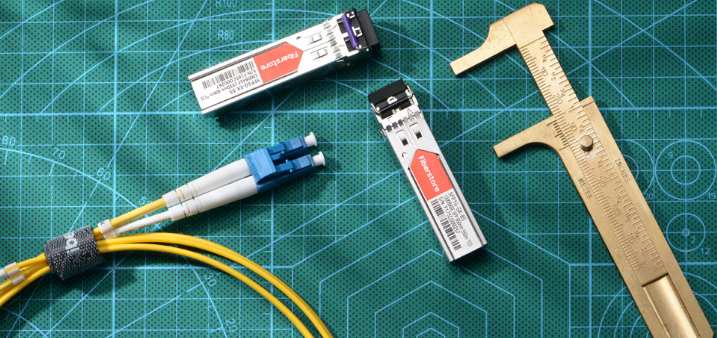Due to the high bandwidth and low attenuation brought by optical fiber, the speed of the network is taking a huge leap. Fiber optic transceiver technology is also rapidly evolving to meet the ever-increasing demands for speed and capacity. Let’s take a look at how this advancement will affect data centers.
A fiber optic transceiver is an integrated circuit (IC) that can independently transmit and receive data in both directions. The device combines a transmitter and receiver into a single module that converts electrical signals into optical signals, enabling these signals to be efficiently transmitted from server to server over fiber optic cables.
The transmitter converts electrical input into optical output from a laser diode or LED light source (light is coupled into an optical fiber through a connector and transmitted through a fiber optic cable). The light from the end of the fiber is coupled to a receiver, and a detector converts the light into an electrical signal, which is conditioned for use by the receiving device. What’s inside a fiber optic transceiver?
Optical fiber transceivers consist of transmitters, receivers, optical devices and chips. The chip is usually regarded as the heart of the fiber optic module. In recent years, there has been growing interest in using silicon photonics in transceiver chips — building lasers on silicon and then fusing optical components with silicon integrated circuits. It addresses the need for faster connections from rack to rack and across data centers. It effectively simplifies the assembly process. In addition, transceivers can be made more compact, reducing the overall server footprint and enabling smaller, leaner data centers while maintaining high port density. On the other hand, smaller size means less power consumption and lower cost.
A Brief History of Optical Transceivers
The adoption of silicon photonics technology in transceiver chips is partly a testament to the tremendous advancement in fiber-optic transceiver technology. The trend is that fiber optic transceivers are moving towards more compact sizes and higher data rates to accommodate the surge in data traffic brought about by the Internet revolution.
Post time: Oct-09-2022


